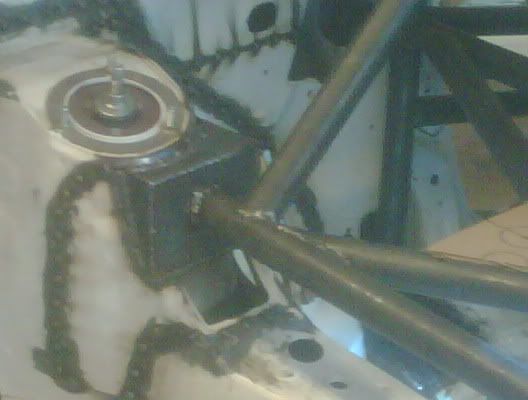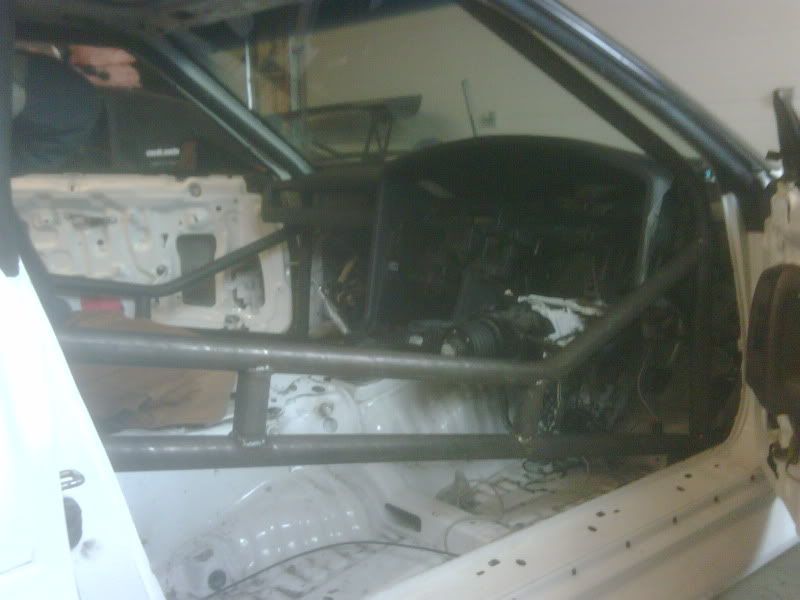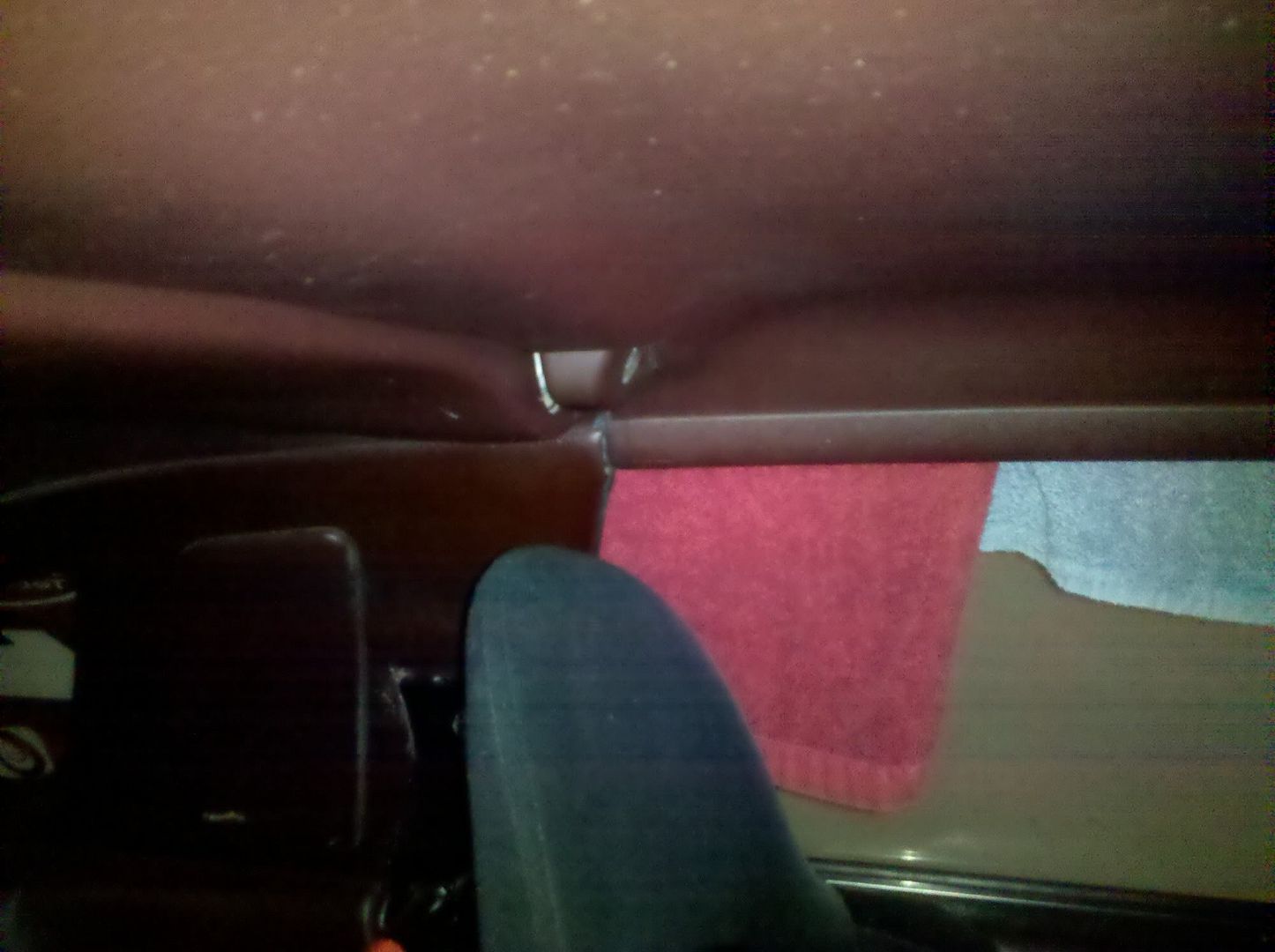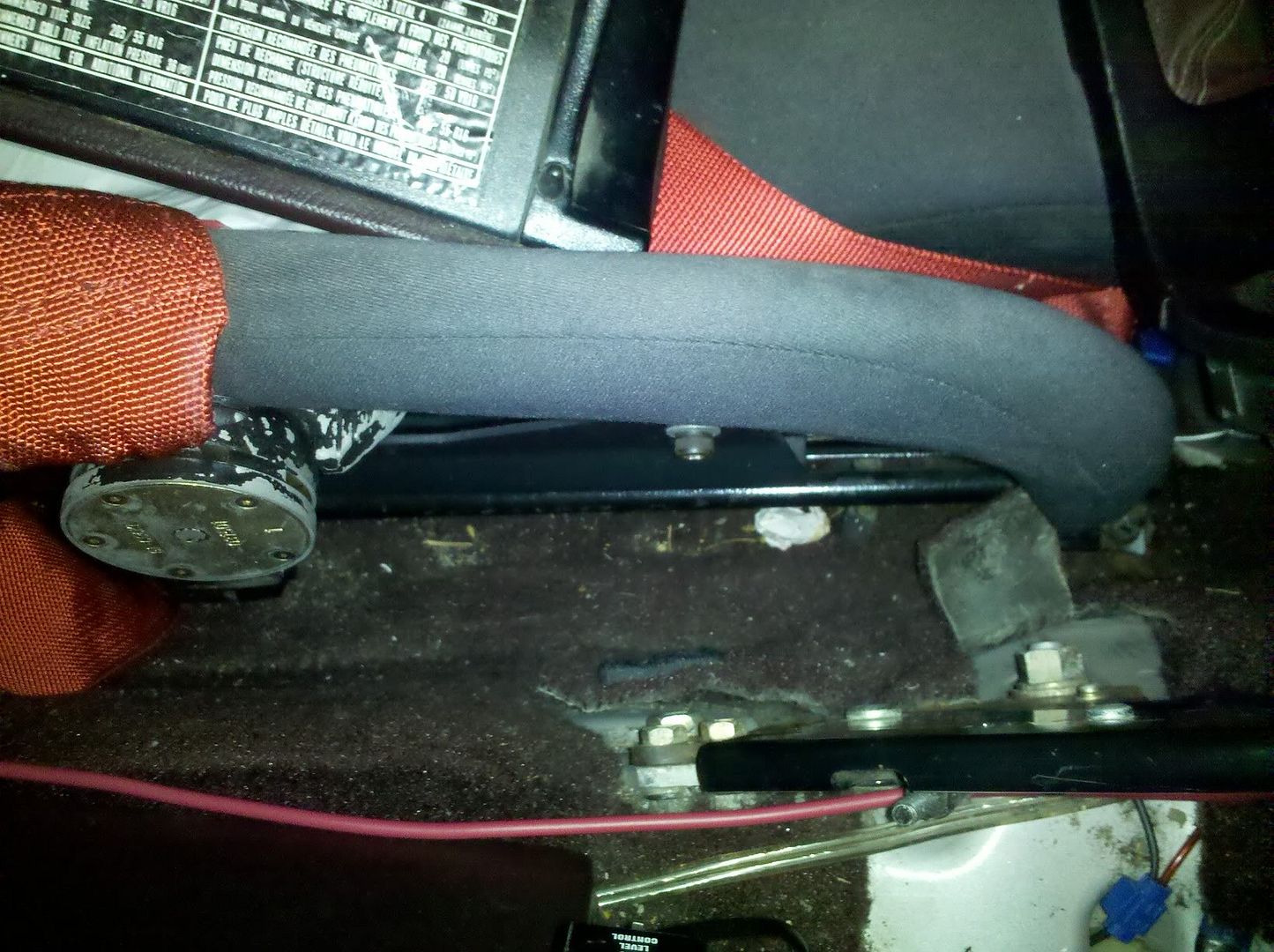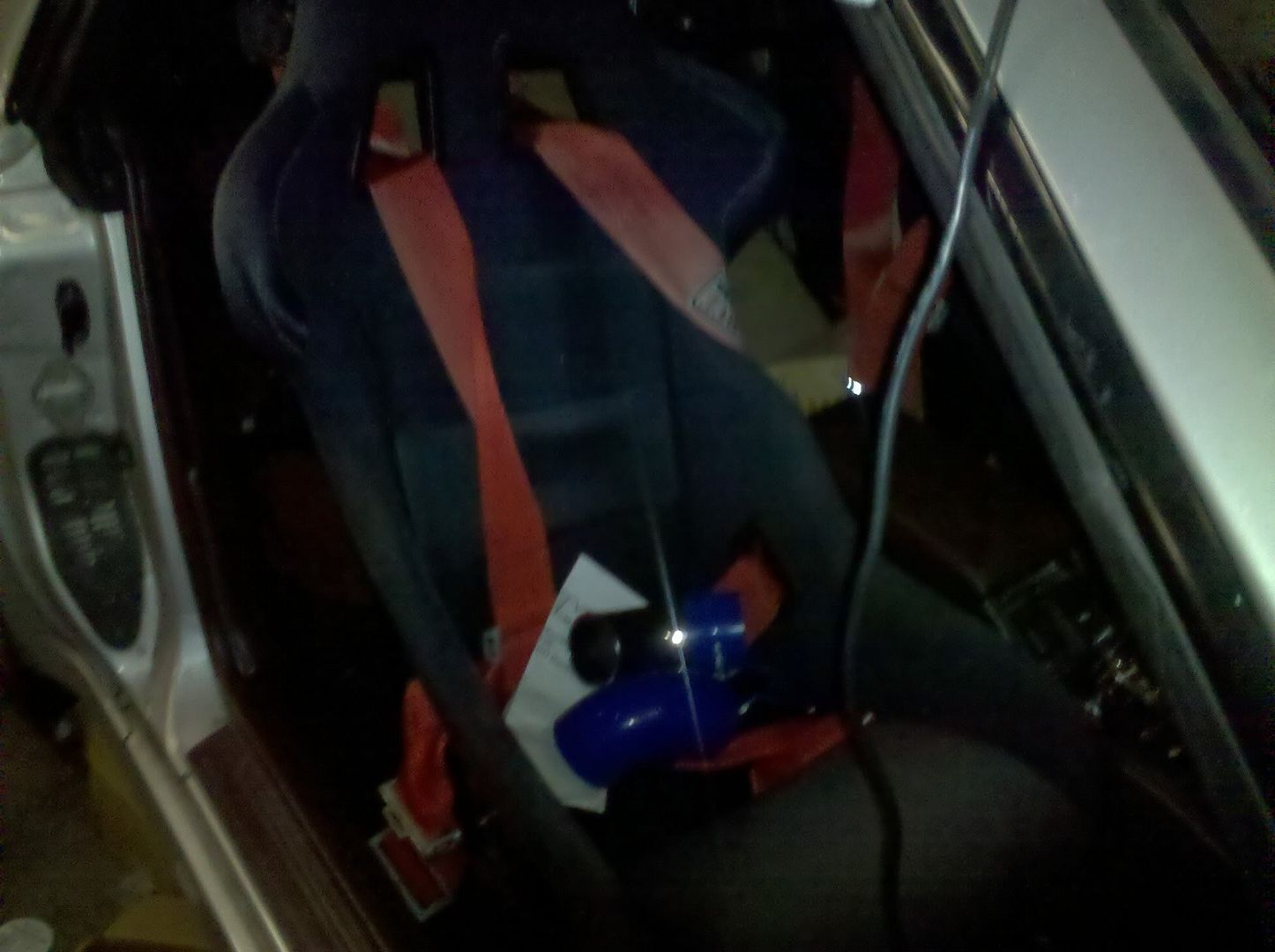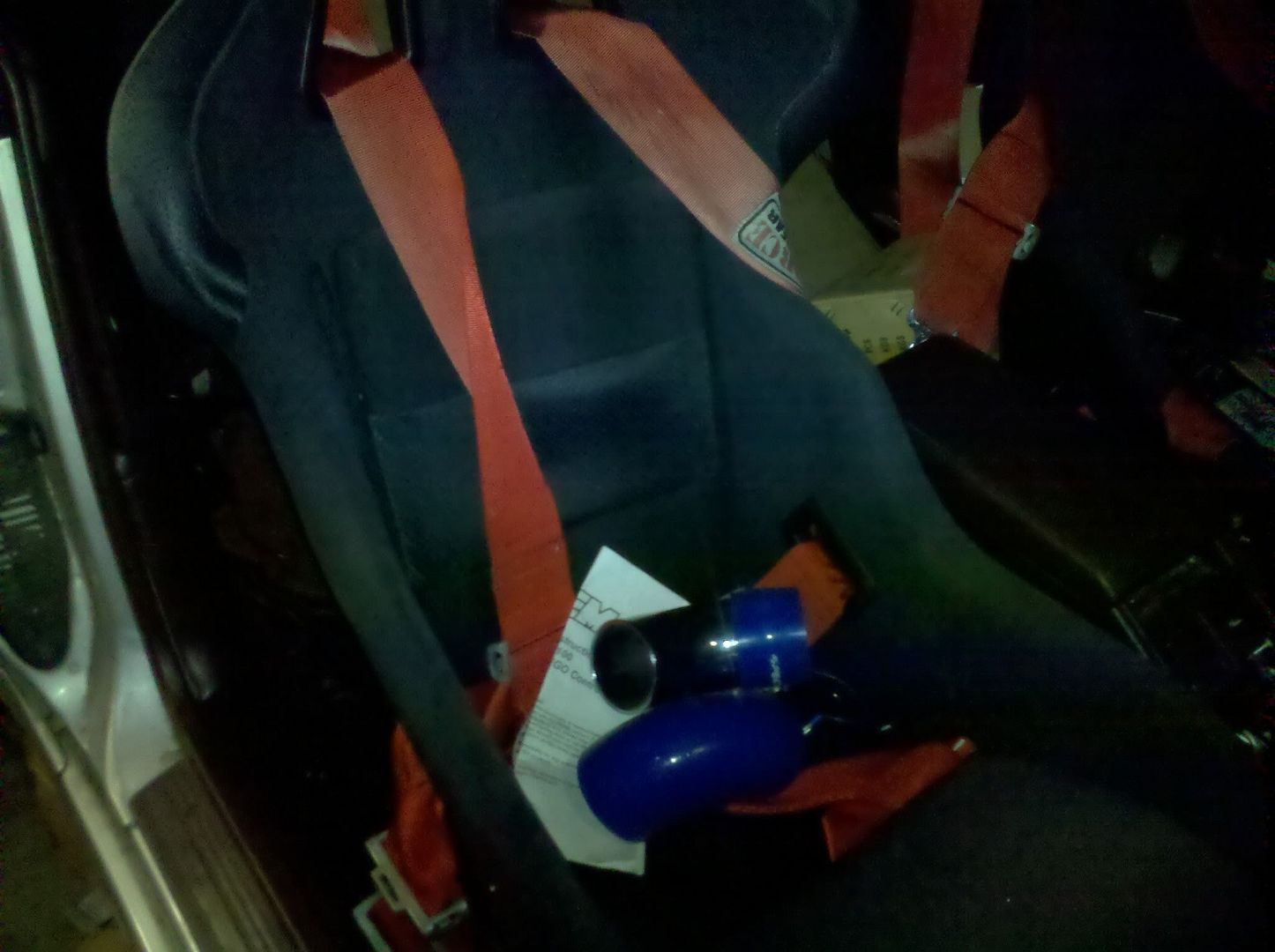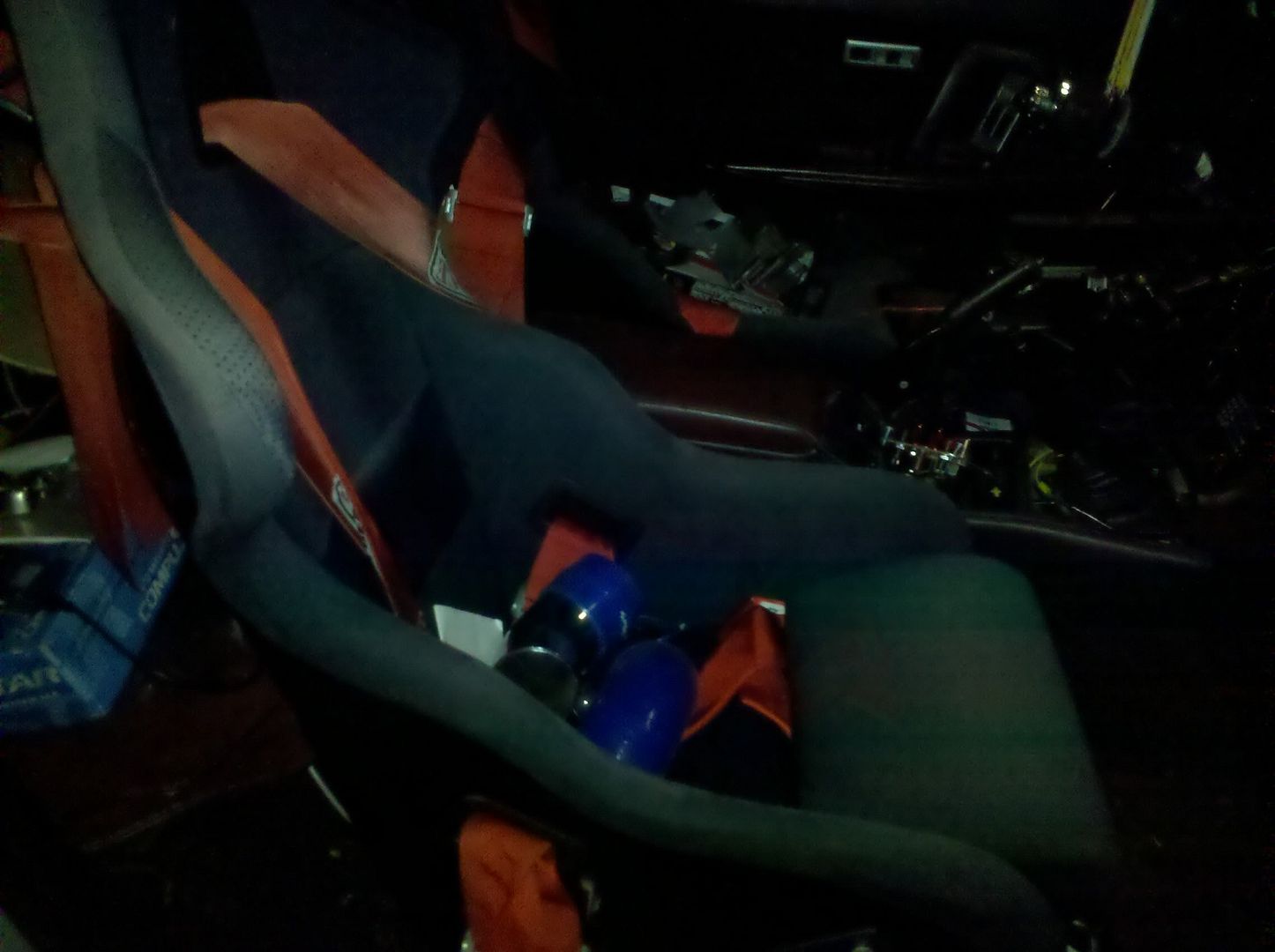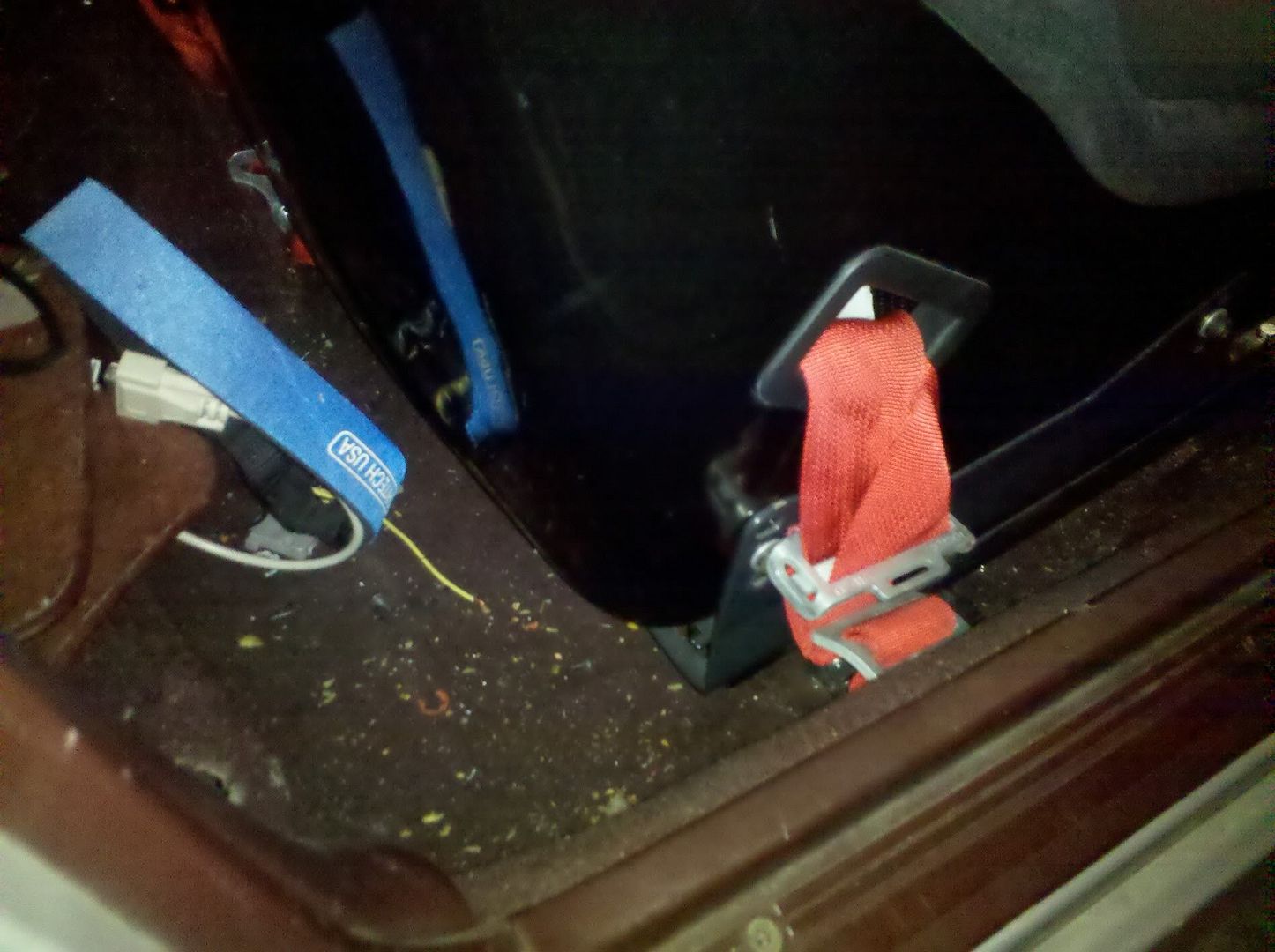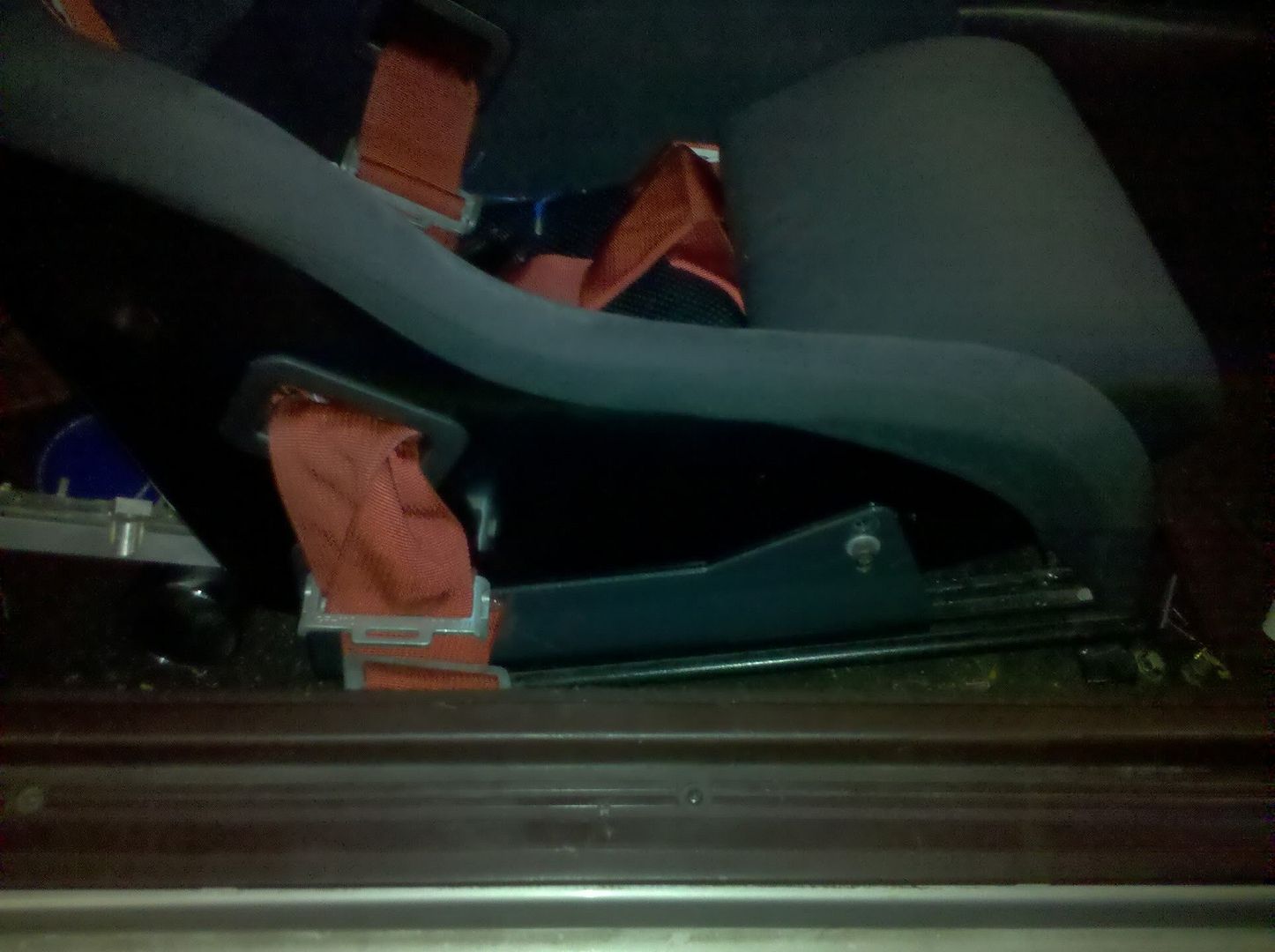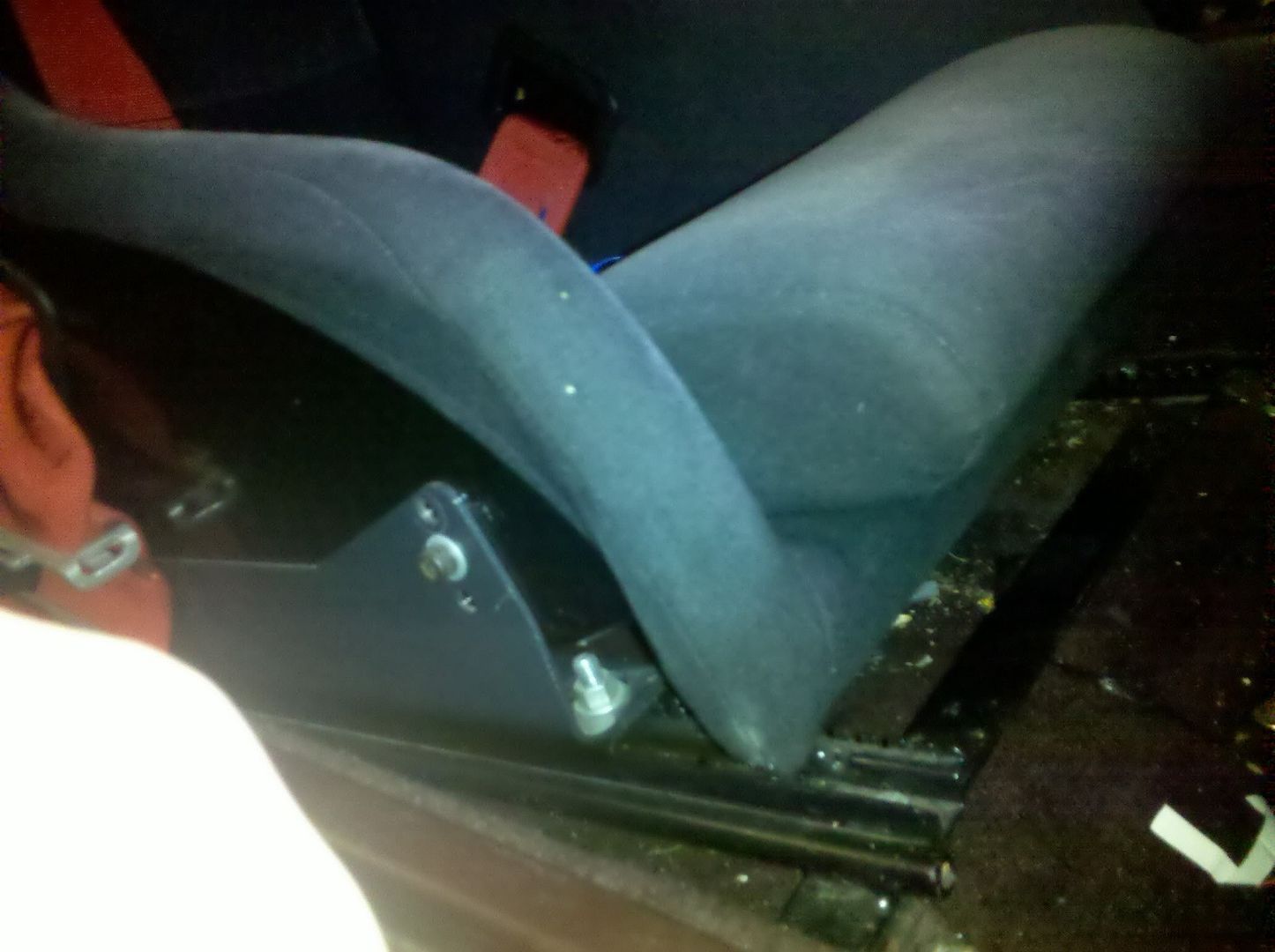This is what NHRA is requiring of the Roll cage
All cage structures must be designed in an attempt to protect the
driver from any angle, 360 degrees. All 4130 chromoly tube welding
must be done by approved TIG heliarc process; mild steel tube
welding must be approved MIG wire feed or TIG heliarc process.
Welding must be free of slag and porosity. Any grinding of welds
prohibited. Plating of chassis prohibited for all cars manufactured
after Jan. 1, 2003, unless otherwise noted in Class Requirements;
painting permitted. Additionally, roll cage must be padded anywhere
the driver’s helmet may contact it while in the driving position.
Beginning June 1, 2011, all cars running 9.99 (*6.39) and quicker,
padding must meet SFI Spec 45.1. Additional padding mounted on
flat stock and fastened to the roll cage on both sides of the driver's
helmet, mandatory in Pro Mod, Top Alcohol Dragster, Top Alcohol
Funny Car, Pro Stock, Funny Car, and Top Fuel. Additional padding
must be NHRA-accepted (with manufacturer’s name displayed),
securely mounted using bolts or locking fasteners, and must include
flame-retardant covering. A current list of NHRA-accepted lateral
head supports is available on NHRA.com. Refer to illustrations in
Section 4:11 as well as specific Class Requirements for the
applicable e.t. and body-style roll-cage requirements. Open-bodied
cars running 9.99 and quicker and/or faster than 135 mph must meet applicable SFI Specification for e.t. (see Class Requirements).
Full-bodied cars running 8.49 and quicker and/or exceeding 180
mph must meet applicable SFI Specification for e.t. and weight (see
Class Requirements). SFI Specifications may be purchased from
the SFI Foundation (sfifoundation.com, 858-451-8868); SFI
Specifications are not available from NHRA Technical Services.
Full-Bodied Cars
On full-bodied cars with driver in driving position, helmet must be in
front of main hoop. If helmet is behind or under main hoop,
additional tubing same size and thickness as roll cage must be
added to protect driver. Main hoop may be laid back or forward, but
driver must be encapsulated within the required roll-cage
components. On unibody cars with stock floor and firewall (wheel
tubs permitted), the roll cage may be bolted or welded to the
floor/rocker box via 6-inch x 6-inch x .125-inch steel plates similar to
the roll-bar attachment requirements of paragraph 4:10 in this
section. Unless attaching to OEM floor or frame, the minimum requirements for a frame member to which a roll-cage member is
attached are 1 5/8-inch x .118-inch MS or .083-inch CM round
and/or 2-inch x 2-inch x .058 MS or CM rectangular.
All cage structures must have in their construction a cross bar for
seat bracing and as the shoulder harness attachment point; cross
bar must be installed no more than 4 inches below, and not above,
the driver’s shoulders, or to side bar. All required rear braces must
be installed at a minimum angle of 30 degrees from vertical and
must be welded in. Side bar must pass the driver at a point midway
between the shoulder and elbow.
Unless an OEM framerail is located below and outside of driver’s
legs (i.e., ’55 Chevy, ’65 Corvette, etc.) a rocker or sill bar, minimum
1 5/8-inch x .083 CM or .118 MS or 2-inch x 2-inch x .058-inch CM
or MS rectangular, is mandatory in any car with a modified floor or
rocker box within the roll-cage uprights (excluding 6 square feet of
transmission maintenance opening). Rocker bar must be installed
below and outside of driver’s legs and must tie into the main hoop,
the forward hoop, frame, frame extension, or side diagonal. Rocker
bar may not tie into swing-out side bar support. If rocker bar ties
into side diagonal more than 5 inches (edge to edge) from forward
roll-cage support or main hoop, a 1 5/8-inch x .083 CM or .118 MS
brace/gusset is mandatory between the diagonal and forward rollcage
support or main hoop.
“D” bar installation for full-bodied cars: For front-wheel-drive cars,
with complete OEM floor (from the firewall to the rear of the trunk)
and rocker/sill boxes, the 1 1/4-inch x .058-inch CM (.118-inch MS)
“D” bars (when required; i.e., when the main hoop is not welded to
the frame) may be welded to a 1 5/8-inch x .083-inch CM (.118-inch
MS) crossmember welded to the rocker/sill box via conventional 6-
inch x 6-inch x 1/8-inch-thick plates. For rear-wheel-drive cars, with
neither a frame nor subframe connectors, but with complete OEM
floor (from the firewall to the rear of the trunk; exception: the rear
inner wheelwells may be tubbed with steel or aluminum), the 1 1/4-
inch x .058-inch CM (or .118-inch MS) “D” bars may be welded to
conventional 6-inch x 6-inch x 1/8-inch formfitted/contoured plates
attached to the driveshaft tunnel. Otherwise, the “D” bars must be
attached to frame, subframe, or subframe connectors.
Swing-out side bar permitted on OEM full-bodied car 8.50 e.t. and
slower. The following requirements (a through d) apply:
a. 1 5/8-inch O.D. x .083-inch CM or .118-inch MS minimum.
Bolts/pins must be 3/8-inch-diameter steel, minimum and in
double shear at both ends.
b. Male or female clevis(es) permitted. Male clevis must use two
minimum 1/8-inch-thick brackets (CM or MS) welded to each rollcage
upright; female must use minimum 1/4-inch-thick bracket
(CM or MS) welded to each roll-cage upright. Pins must be within
8 inches of the vertical portion of both the forward and main
hoops. A half-cup backing device must be welded to the vertical
portion of the main hoop (inward side) or the upper end of the
swing-out bar (outward side), minimum .118-inch wall (CM or
MS) extending at least 1 5/8 inches past the center of the pins. A
clevis assembly using a minimum .350-inch-thick male
component and two minimum .175-inch-thick female components
may use a 1/2-inch-diameter Grade 5 bolt and does not require a
half-cup backing device.
c. Sliding sleeves of 1 3/8-inch x .083 CM or .118 MS, with
minimum 2-inch engagement, are permitted in lieu of the upper
pin/cup.
d. All bolt/pin holes in the swing-out bar must have at least one-hole
diameter of material around the outside of the hole.
Steel-bodied pickup trucks (7.50 seconds and slower), roll cages
are permitted with no back braces if the roll cage satisfies SFI
25.1E, 25.2, 25.4, or the roll cage consists of a 4-point (door car)
cage with a complete SFI 2.4B, 2.5B, 2.6, 2.7A dragster, SFI 10.2,
10.3 altered, or SFI 10.4 street roadster roll cage/driver’s
compartment incorporated into and attached to the 4-point roll
cage. An upper windshield bar is mandatory.
Non-steel-bodied pickup trucks (7.50 seconds and slower), roll
cages are permitted with no back braces if the roll cage satisfies
SFI 25.1E, 25.2, 25.4, or the roll cage satisfies the requirements for
SFI 2.4B, 2.5B, 2.6, 2.7A dragster, SFI 10.2, 10.3 altered, or SFI
10.4 street roadster roll cage/driver’s compartment. No 4-point
(door car) cage is required and no upper windshield bar is required.
On all cars requiring a roll cage, if the OEM firewall has been
modified (in excess of 1 square foot for transmission removal, not
including bolted in components) a lower windshield or dash bar of 1
1/4 x .058-inch 4130 chromoly or 1 1/4 x .118-inch mild steel is
mandatory connecting the forward cage supports.
All joints indicated as tube-to-tube joints/intersections must be
fabricated by properly notching the components to fit with minimum
clearance unless otherwise noted. Crushing the end of a tube to
oval in lieu of properly notching/fitting the tube is not acceptable.
Welding a plate to the side of one tube and butt welding the other
tube to the plate surface in lieu of properly notching/fitting the tube
is not acceptable.
For Sportsman full-bodied cars that require a roll cage (7.50
seconds and slower, including cars inspected to SFI 25.4 or 25.5): If the windshield/roof bars are interrupted by the dash bar, then either
the entire dash bar must be minimum 1 1/2-inch x .058-inch CM
(.118-inch MS) or the entire dash bar must be minimum 1 1/4-inch x
.058-inch CM (.118-inch MS) and must be braced with gussets to
both the upper and lower sections of each windshield/roof bar. The
gussets may be either 1.75-inch x 1.75-inch x .110-inch (with one
1/2-inch-diameter and two 5/16-inch-diameter holes maximum)
4130 CM or MS plate (triangle shaped) or 3/4-inch x.049-inch CM
(.118-inch MS) tubing at least 4 inches long. An interrupted
windshield/roof bar is defined as one that has been completely
severed into upper and lower sections/pieces and then the
sections/pieces are welded to the dash bar.
 he made himself a dune buggy ground up and its rockin a gixxer 650cc i think he said. Full cage is what im looking for, not just a roll bar. Plus if anyone has pictures of their cage installs that would be very helpful.
he made himself a dune buggy ground up and its rockin a gixxer 650cc i think he said. Full cage is what im looking for, not just a roll bar. Plus if anyone has pictures of their cage installs that would be very helpful.
